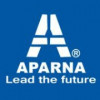


i
Rohan
Builders
Work with us
![]()
Filter interviews by
Rohan Builders Interview Questions and Answers
37 Interview questions
Excavation hazards include cave-ins, falls, and equipment accidents; precautions involve proper shoring and soil assessment.
Cave-ins are the most serious hazard; use trench boxes or shoring to prevent collapses.
Soil types: cohesive (clay) and non-cohesive (sand); cohesive soils can stand at steeper angles.
Follow OSHA guidelines for excavation safety, including proper signage and barriers.
Angle of repose: typically...
JSA focuses on specific job tasks, while HIRA assesses broader hazards and risks in the workplace.
JSA is task-specific, analyzing individual job steps for hazards.
HIRA evaluates overall workplace hazards and risks, not limited to specific tasks.
Example of JSA: Analyzing the risks of using a ladder for maintenance work.
Example of HIRA: Assessing the risk of slips, trips, and falls in the entire facility.
Defect liability refers to the period during which a contractor is responsible for fixing defects in their work after project completion.
Typically lasts for a specified period, often 12 months after project completion.
Contractors must rectify defects at no additional cost to the client.
Examples include fixing leaks, structural issues, or faulty installations.
Defect liability ensures quality and accountability in c...
Statutory compliance refers to the legal framework within which an organization must operate to ensure adherence to laws and regulations.
Ensuring compliance with labor laws, tax laws, environmental regulations, and other legal requirements
Maintaining accurate records and documentation to demonstrate compliance
Regularly reviewing and updating policies and procedures to align with changing laws
Conducting audits and ...
I address site-related problems by identifying the root cause, developing a solution plan, and coordinating with relevant stakeholders for implementation.
Identify the root cause of the problem
Develop a solution plan
Coordinate with relevant stakeholders for implementation
Regularly monitor the progress of the solution
Dynamic HR professional with over 10 years of experience in talent acquisition, employee engagement, and organizational development.
Over a decade of experience in HR management, focusing on strategic workforce planning.
Successfully led a team to implement a new performance management system, increasing employee satisfaction by 30%.
Expert in developing training programs that enhance employee skills and promote care...
Measurement sheet is prepared by taking off quantities from drawings and specifications.
Review drawings and specifications to identify items to be measured
Take accurate measurements using appropriate tools and techniques
Record measurements in a systematic manner on the measurement sheet
Include relevant details such as dimensions, quantities, and units
Double-check measurements for accuracy and completeness
Organize ...
Concrete is a composite material made of cement, water, aggregates, and sometimes additives, used in construction.
Concrete is a versatile and durable material used in construction for buildings, bridges, roads, and more
It is made by mixing cement, water, and aggregates like sand and gravel
Additives can be included to enhance specific properties of the concrete, such as strength or workability
Once mixed, concrete h...
Deductions for plaster work include wastage, openings, and curing period.
Wastage of materials during application
Deductions for openings such as windows and doors
Curing period for the plaster work
Deduction for shuttering work is the process of calculating and subtracting the cost of temporary formwork used in construction projects.
Deduction for shuttering work is typically calculated based on the area of formwork used.
The cost of shuttering work is deducted from the total billing amount of a construction project.
This deduction accounts for the temporary nature of formwork and is a common practice in constr...
Rohan Builders Interview Experiences
48 interviews found
I appeared for an interview in May 2025, where I was asked the following questions.
- Q1. What is the main difference between Job Safety Analysis (JSA) and Hazard Identification and Risk Assessment (HIRA)?
- Ans.
JSA focuses on specific job tasks, while HIRA assesses broader hazards and risks in the workplace.
JSA is task-specific, analyzing individual job steps for hazards.
HIRA evaluates overall workplace hazards and risks, not limited to specific tasks.
Example of JSA: Analyzing the risks of using a ladder for maintenance work.
Example of HIRA: Assessing the risk of slips, trips, and falls in the entire facility.
- Q2. What is a confined space, and what are the associated hazards and precautions? What are the responsibilities of the safety officer, attendant, entrant, and rescue team?
- Ans.
A confined space is an area not designed for continuous occupancy, posing unique hazards requiring specific safety measures.
Definition: A confined space is an area with limited entry and exit, such as tanks, silos, or tunnels.
Hazards: Oxygen deficiency, toxic gases, flammable materials, and physical hazards like engulfment or entrapment.
Precautions: Conduct air quality tests, ensure proper ventilation, use personal pro...
- Q3. What are the hazards and precautions associated with excavation, and what types of soil and angles should be considered?
- Ans.
Excavation hazards include cave-ins, falls, and equipment accidents; precautions involve proper shoring and soil assessment.
Cave-ins are the most serious hazard; use trench boxes or shoring to prevent collapses.
Soil types: cohesive (clay) and non-cohesive (sand); cohesive soils can stand at steeper angles.
Follow OSHA guidelines for excavation safety, including proper signage and barriers.
Angle of repose: typically 1:1 ...
- Q4. What are the different types of cranes, the associated hazard precautions, and what is ASLI in relation to safety devices for cranes?
- Ans.
Cranes vary in type and hazards; precautions include inspections and safety devices like ASLI for operational safety.
Types of cranes include: Tower cranes, Mobile cranes, Crawler cranes, and Overhead cranes.
Hazard precautions: Regular inspections, operator training, and load limits.
Example: Tower cranes require proper anchoring to prevent tipping.
ASLI (Automatic Safe Load Indicator) helps prevent overload by providing ...
- Q5. What are the different types of scaffolding, the hazards associated with it, the required specifications for the sole plate and base jack, the thickness of pipe components, and what is the process for cons...
- Ans.
Scaffolding types, hazards, specifications, and construction process are crucial for safety in construction.
Types of scaffolding: Tube and clamp, frame, system, and suspended scaffolding.
Hazards: Falls, falling objects, structural failure, and electrocution.
Sole plate specifications: Must be made of sturdy material, minimum thickness of 50mm.
Base jack specifications: Should be adjustable, with a minimum load capacity o...
Interview Preparation Tips
I appeared for an interview in Mar 2025, where I was asked the following questions.
- Q1. Can you do rate analysis?find only material rates for 12mm thk internal plaster in CM 1:4
- Q2. If you know cost per sft of previous project,write rates per sft of all activities starting from Excavation,PCC .... and so on.
- Q3. Do you Know reconciliation?what is the allowable wastage for reinforcement?
- Q4. What are the ongoing labour rates for Painting,plastering,shuttering and reinforcement?
- Q5. Assume there are 200 labours present at the site now and all concrete works are going on,can you assess the qty of work done?
- Q6. What id the labour output for block work,reinforcement.paint and shuttering works?
- Q7. Do you know FIIDC and general conditions of contract?
- Q8. When the defect liability period starts for a contractor?
- Q9. What is defect liability?
- Ans.
Defect liability refers to the period during which a contractor is responsible for fixing defects in their work after project completion.
Typically lasts for a specified period, often 12 months after project completion.
Contractors must rectify defects at no additional cost to the client.
Examples include fixing leaks, structural issues, or faulty installations.
Defect liability ensures quality and accountability in constr...
- Q10. If a contractor doesn't rectify his defects,how will you recover the liabilities?
- Q11. What if both security and retention both are paid to the contractor in the above case?
- Q12. Can you do cash flow for the project?
Interview Preparation Tips
(2 Questions)
- Q1. How to prepare measurement sheet?
- Ans.
Measurement sheet is prepared by taking off quantities from drawings and specifications.
Review drawings and specifications to identify items to be measured
Take accurate measurements using appropriate tools and techniques
Record measurements in a systematic manner on the measurement sheet
Include relevant details such as dimensions, quantities, and units
Double-check measurements for accuracy and completeness
Organize the m...
- Q2. Current project billing process
- Ans.
Our current project billing process involves tracking expenses, labor costs, and materials used to accurately bill clients.
We track expenses such as equipment rentals, subcontractor costs, and travel expenses.
Labor costs are calculated based on hours worked by each team member and their respective rates.
Materials used are documented and their costs are included in the billing.
We ensure all expenses are properly allocat...
I appeared for an interview in Mar 2025, where I was asked the following questions.
- Q1. Civil power project
- Q2. Road work farnace CCM
- Q3. Industrial all project
Interview Preparation Tips
(2 Questions)
- Q1. Power plant whrb induction farnace and water tank
- Q2. Road work
Interview Preparation Tips
(2 Questions)
- Q1. What is concrete
- Ans.
Concrete is a composite material made of cement, water, aggregates, and sometimes additives, used in construction.
Concrete is a versatile and durable material used in construction for buildings, bridges, roads, and more
It is made by mixing cement, water, and aggregates like sand and gravel
Additives can be included to enhance specific properties of the concrete, such as strength or workability
Once mixed, concrete harden...
- Q2. What is BBS & Components
- Ans.
BBS stands for Bar Bending Schedule, which is a detailed list of reinforcement bars to be used in a construction project.
BBS includes details such as bar mark, type of bar, diameter, length, shape, and quantity.
It helps in estimating the quantity of steel required for the project.
BBS is essential for ensuring the structural integrity and strength of the building.
Components of BBS include bending shapes, cutting length,...
Skills evaluated in this interview
I applied via Walk-in and was interviewed in Mar 2024. There was 1 interview round.
(4 Questions)
- Q1. About all my skill and education knowledge and what is strength about construction work.
- Q2. In my education background
- Q3. About my last job
- Q4. Additional knowledge
Interview Preparation Tips
I applied via Naukri.com and was interviewed in Mar 2024. There were 2 interview rounds.
(2 Questions)
- Q1. One meter how much inch
- Ans.
One meter is equal to 39.37 inches.
One meter is equivalent to 100 centimeters.
One inch is equal to 2.54 centimeters.
To convert meters to inches, multiply by 39.37 (100 * 2.54).
- Q2. Steel density value and units
- Ans.
Steel density is typically around 7.85 g/cm^3.
Steel density is commonly expressed in grams per cubic centimeter (g/cm^3).
The density of steel can vary depending on the specific alloy composition.
For example, the density of stainless steel is around 7.9 g/cm^3, while carbon steel is around 7.85 g/cm^3.
(1 Question)
- Q1. Explain your privious jobs about your response
I applied via Naukri.com and was interviewed in Dec 2023. There was 1 interview round.
(11 Questions)
- Q1. What is the Least Count of dumpy level Staff Reading ?
- Ans.
The least count of a dumpy level staff reading is typically 0.01 ft or 1 mm.
The least count is the smallest measurement that can be read on the scale of the dumpy level staff.
For most dumpy levels, the least count is 0.01 ft or 1 mm.
This means that the dumpy level can measure differences in elevation as small as 0.01 ft or 1 mm.
- Q2. Why Concrete Cover is provided for reinforcement ?
- Ans.
Concrete cover is provided for reinforcement to protect it from corrosion, fire, and other environmental factors.
Concrete cover protects reinforcement from corrosion by preventing exposure to moisture and aggressive chemicals.
It provides fire resistance by acting as a barrier between the reinforcement and the fire.
Concrete cover helps in maintaining the bond between reinforcement and concrete, ensuring structural integ...
- Q3. What is tha volume of 50 kg bag of cement ?
- Q4. What is Dessity of steel ?
- Q5. What is tha size of concrete Cube ?
- Q6. What is tha Role of a Civil Engineer at Site ?
- Ans.
Civil engineers at site are responsible for overseeing construction projects, ensuring they are completed safely, on time, and within budget.
Supervising construction activities to ensure compliance with design specifications and safety standards
Managing resources and materials efficiently to meet project deadlines
Collaborating with architects, contractors, and other stakeholders to resolve any issues that may arise
Cond...
- Q7. What is tha minimum concrete grade for RCC work ?
- Ans.
Minimum concrete grade for RCC work is M20.
Minimum concrete grade for RCC work is M20 as per IS 456:2000.
Higher grades like M25, M30, M35, etc. can also be used depending on structural requirements.
Concrete grades indicate the compressive strength of concrete after 28 days of curing.
Higher grades are used for structures requiring higher strength like bridges, high-rise buildings, etc.
- Q8. What is rha dsssity of Unit wait of cement ?
- Ans.
The density of unit weight of cement is typically around 1440 kg/m^3.
The density of unit weight of cement is commonly around 1440 kg/m^3.
This value can vary slightly depending on the type and brand of cement.
Density is a measure of mass per unit volume, in this case, kilograms per cubic meter.
- Q9. What is tha Grade of Cement ?
- Q10. What is the Slump value of concrete for Normal RCC work
- Ans.
The slump value of concrete for Normal RCC work is typically between 25-75 mm.
The slump value of concrete for Normal RCC work is usually around 50 mm.
The slump value can vary based on the specific requirements of the project and the mix design.
A higher slump value indicates a more workable concrete mix, while a lower slump value may be used for specialized applications.
It is important to test the slump value of concret...
- Q11. How many cube filled for 1 cubic meter concrete ?
Interview Preparation Tips
- Building Structure
- Building Construction
- Site work
- Billing
(1 Question)
- Q1. Structure details & surveying
Top trending discussions






Rohan Builders Interview FAQs
The duration of Rohan Builders interview process can vary, but typically it takes about less than 2 weeks to complete.
Tell us how to improve this page.
Rohan Builders Interviews By Designations
- Rohan Builders Assistant Engineer - Civil Interview Questions
- Rohan Builders Civil Engineer Interview Questions
- Rohan Builders Assistant Engineer Interview Questions
- Rohan Builders Senior Engineer Interview Questions
- Rohan Builders Safety Officer Interview Questions
- Rohan Builders Safety Supervisor Interview Questions
- Rohan Builders QA QC Engineer Interview Questions
- Rohan Builders Project Manager Interview Questions
- Show more
Interview Questions for Popular Designations
Overall Interview Experience Rating
based on 70 interview experiences
Difficulty level
Duration
Interview Questions from Similar Companies
Rohan Builders Reviews and Ratings
based on 725 reviews
Rating in categories
|
Senior Engineer
94
salaries
| ₹3.5 L/yr - ₹9.5 L/yr |
|
Safety Officer
77
salaries
| ₹2.4 L/yr - ₹6.1 L/yr |
|
Assistant Engineer
54
salaries
| ₹3.5 L/yr - ₹6.5 L/yr |
|
Junior Engineer
45
salaries
| ₹2.4 L/yr - ₹4.3 L/yr |
|
Senior Civil Engineer
43
salaries
| ₹4.5 L/yr - ₹10.1 L/yr |

Sobha

Lodha Group

Cushman & Wakefield

Godrej Properties
- Home >
- Interviews >
- Rohan Builders Interview Questions










